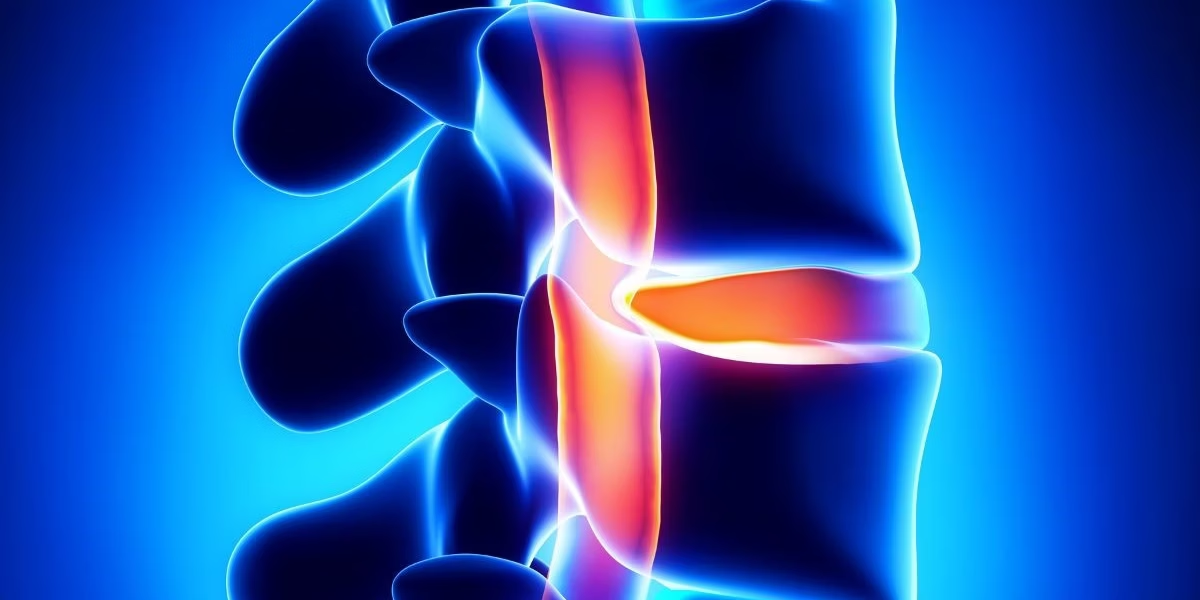
Auto Accident Severe Spinal Injuries
Auto accidents are one of the leading causes of severe spinal injuries in the United States, often resulting in life-altering physical, emotional, and financial challenges. The spine’s intricate structure and vital role in supporting the body make it particularly vulnerable to the violent forces of a collision. At Kendall Law Group, we understand the devastating impact these injuries can have, and we are committed to helping accident victims in Kansas City recover the compensation they need to access proper medical care and rebuild their lives. Whether your injury requires surgical intervention, non-surgical pain management, or long-term rehabilitation, we’re here to guide you through the legal process. In this blog, we’ll explore why the spine is so susceptible to injury in auto accidents, the types of severe spinal injuries that occur, management options, and how victims can pursue compensation for their recovery.
Why the Spine is Susceptible to Injury in Auto Accidents
The spine is one of the most complex and vital structures in the body, responsible for supporting movement, protecting the spinal cord and bearing the weight of the upper body. However, the spine’s intricate structure also makes it highly susceptible to injury in car accidents. Sudden, high-impact forces can overwhelm the spine’s ability to absorb shock, leading to severe injuries. Several factors contribute to the spine’s vulnerability in auto accidents:
- Delicate Anatomy of the Spine: the spine is composed of 33 vertebrae, intervertebral discs, ligaments, muscles and nerves – all of which must work together to maintain stability and flexibility. An auto accident’s violent forces can easily disrupt this delicate balance, resulting in injury.
- Aging and Degenerative Changes: As we age, the spine undergoes natural wear and tear, making it more prone to injury. Conditions such as degenerative disc disease, arthritis and osteoporosis weaken the spine’s structure. For older adults, even low-speed collisions can result in compression fractures or significant pain due to pre-existing spinal degeneration.
- Limited Shock Absorption: The intervertebral discs act as cushions between the vertebrae, absorbing shock during movement. However, these discs can become dehydrated, thinner or less elastic over time, reducing their ability to absorb the forces generated in a car accident, especially those involving large commercial vehicles.
- Positioning During a Collision: The seated position in a vehicle places the spine in a vulnerable state. Sudden forward, backward or rotational forces can strain or damage the spine, particularly in rear-end, side-impact or rollover accidents.
- Pre-existing Spinal Conditions: Individuals with pre-existing conditions, such as scoliosis, herniated discs or previous back injuries are more susceptible to severe damage during a car accident. Even minor collisions can aggravate those conditions, leading to chronic pain and functional impairments.
Understanding Severe Spinal Injuries
Severe spinal injuries fall into two broad categories: non-surgical injuries and surgical spinal cord injuries. Both types can profoundly impact an individual’s physical and emotional well-being, often necessitating comprehensive medical care and long-term management.
Non-Surgical Spinal Injuries
These injuries do not require surgical intervention but still significantly affect the spine’s function. Examples include:
- Herniated Discs: Bulging or ruptured discs pressing on nerves.
- Facet Joint Injuries: Damage to the small joints that stabilize the spine.
- Nerve Compression (Radiculopathy): Pressure on spinal nerves leading to pain, tingling, or weakness.
- Spinal Fractures: Stable fractures that do not impinge on the spinal cord.
Surgical Spinal Injuries
Surgical intervention is often necessary when the spinal cord or surrounding structures are severely compromised. Examples include:
- Spinal Cord Compression: Severe pressure on the spinal cord from fractures, disc herniations, or other injuries.
- Unstable Fractures: Fractures that threaten spinal alignment or stability.
- Severe Nerve Damage: When nerve function is impaired due to spinal trauma.
- Spinal Cord Lacerations or Contusions: Direct injury to the spinal cord, potentially causing paralysis or loss of sensation.
Common Causes of Severe Spinal Injuries in Auto Accidents
The severity of a spinal injury often depends on the type of accident and the forces involved. Common scenarios include:
- High-Speed Collisions The intense force of impact can fracture vertebrae or compress the spinal cord.
- Rollover Accidents These accidents often cause multiple spinal injuries, including fractures and severe nerve damage.
- T-Bone Collisions Side impacts twist and compress the spine, leading to herniated discs or nerve compression.
- Head-On Collisions The sheer force can cause compression fractures, spinal instability, or cord injuries.
- Commercial Vehicle Accidents Accidents involving large trucks or buses generate significant impact forces, often leading to catastrophic spinal injuries.
Management of Severe Spinal Injuries
Non-Surgical Management
Non-surgical treatments focus on pain relief, restoring mobility, and preventing further complications.
- Epidural Steroid Injections (ESI)
- Reduce inflammation around spinal nerves to alleviate pain from herniated discs or nerve compression.
- Relief can last weeks to months.
- Medial Branch Nerve Blocks Temporarily block pain signals from facet joints. Often a precursor to radiofrequency ablation.
- Radiofrequency Ablation (RFA) Uses heat to disable nerves transmitting pain signals from the spine. Provides long-term relief.
- Physical Therapy Strengthens spinal support muscles, improves flexibility, and reduces pain through targeted exercises.
- Medications NSAIDs for inflammation, muscle relaxants for spasms, and nerve pain medications for radiculopathy.
- Trigger Point Injections Relieve localized muscle tension caused by soft tissue injuries.
Surgical Management
Surgery is often required for spinal cord injuries that compromise the stability of the spine or cause significant neurological symptoms.
- Spinal Fusion
- Stabilizes the spine by fusing two or more vertebrae together.
- Commonly used for unstable fractures or degenerative conditions.
- Decompression Surgery
- Relieves pressure on the spinal cord or nerves by removing damaged discs, bone fragments, or other obstructions.
- Examples include laminectomy or discectomy.
- Vertebroplasty or Kyphoplasty Minimally invasive procedures to stabilize compression fractures using bone cement.
- Spinal Cord Repair When possible, surgeons may attempt to repair lacerations or damage to the spinal cord to restore function.
- Implantation of Devices Devices such as spinal cord stimulators may be used to manage chronic pain after surgery.
Costs of Managing Severe Spinal Injuries
Severe spinal injuries often come with substantial financial burdens. Common costs include:
- Non-Surgical Treatments:
- Epidural Steroid Injections: $1,000–$1,500 per session.
- Radiofrequency Ablation: $2,000–$4,000 per procedure.
- Physical Therapy: $75–$200 per session.
- Surgical Treatments:
- Spinal Fusion: $50,000–$100,000, depending on complexity.
- Decompression Surgery: $15,000–$50,000.
- Spinal Cord Repair: $50,000+ for severe injuries.
Long-term care, including rehabilitation, medications, and assistive devices, can further escalate costs.
Seeking Compensation for Spinal Injuries
Victims of severe spinal injuries caused by car accidents may be entitled to compensation for:
- Medical expenses (including surgeries and rehabilitation).
- Pain and suffering.
- Lost wages and future earning capacity.
- Long-term care and assistive devices.
Navigating the claims process can be complex, particularly when dealing with insurance companies or proving the need for future medical care. A skilled Kansas City auto accident injury lawyer can help ensure that victims receive fair compensation to cover their current and future needs.
Seeking Compensation for Spinal Injuries with Pre-Existing Conditions
If you have a pre-existing spine condition such as degenerative disc disease, arthritis or a prior back or neck injury, you are still entitled to seek compensation if a car accident in Missouri or Kansas worsens your condition. Both states follow the “eggshell skull rule,” which means that the at-fault party is legally responsible for all damages caused by the accident, even if the victim is more vulnerable due to pre-existing conditions. However, insurance companies in Missouri and Kansas often attempt to deny or reduce claims by blaming the victim’s prior condition for their new pain and limitations. To protect your rights, and to ensure you are awarded the compensation you deserve, it is imperative to seek guidance from a personal injury attorney before speaking with insurance adjusters regarding your injuries.
Kansas City Auto Accident Injury Trial Lawyer
Severe spinal injuries require comprehensive medical care and can result in significant financial burdens. At Kendall Law Group, we are dedicated to helping accident victims secure the compensation they need for their recovery. Whether your injury requires non-surgical management or surgical intervention, we will guide you through the legal process and fight for your rights.
Call us today at (816) 531-3100 or HERE.
Additional Resources
Navigating Medical Payment (MedPay) Coverage in Kansas and Missouri
Kansas Personal Injury Protection (PIP) Coverage Explained
Auto Accident Delayed Injury Onset: Why You Should Never Ignore Symptoms
The Impact of Delayed & Gapped Medical Treatment in Missouri & Kansas Car Accident Injury Claims






